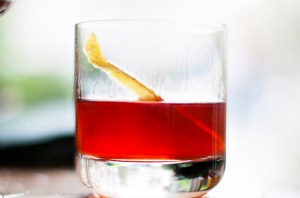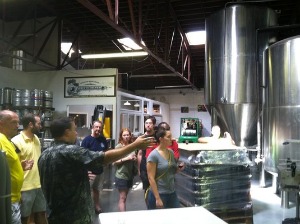 Founded in 1670, Charleston is a fine place to experience American history. When you visit Charleston, you’re treated with Southern charm from the locals while you walk along natural cobblestone-paved streets.
Founded in 1670, Charleston is a fine place to experience American history. When you visit Charleston, you’re treated with Southern charm from the locals while you walk along natural cobblestone-paved streets.
Spending time in Charleston also means you can take part in one of our greatest past times: drinking a nice cold ale (or cocktail, if you prefer) in one of the many restaurants, bars, cruises, or breweries.
If you’re visiting Charleston soon, or if you’re looking to explore somewhere new in your city, below you’ll discover today’s most popular places to grab a drink in Charleston.
Cheers!
Coast: A Lowcountry Bar and Restaurant by the Sea
According to Vacations Made Easy, hundreds of thousands of people visit Charleston each year. Experiencing historical architecture is likely one of the reasons to visit. Another reason is the people.
But let’s be honest here, people love food — especially when it’s down home Southern cooking! And what better way to enjoy a meal with friends than with a refreshing cold beer on the side?
Coast is where you can do exactly that.
Coast describes itself as a Lowcountry bar that services Charleston’s freshest seafood. Open from 5:30 p.m. to 10:00 p.m., Coast serves food with a cost ranging from $11-30. One of the favorites is fresh Escolar, which you can enjoy alongside a selection of eight different sauces.
Coast also offers a full bar with drinks ranging from dozens of wine options to cold draughts to mixed cocktails.
The Gin Joint Bar
Open from 5:00 p.m. to 12:00 a.m., The Gin Joint Bar combines enthusiastic service with a plethora of mixed drinks sourced from local ingredients. Drinks at The Gin Joint Bar periodically change based on the season, so you can expect to try something new almost every time you go. links to http://theginjoint.com/
If you want to mix things up even more, you can have the bartender make you a drink based on two of the following words:
- Refreshing
- Fruit
- Sweet
- Herbal
- Bitter
- Floral
- Tart
- Strong
- Fizzy
- Vegetal
- Unusual
- Smokey
- Savory
- Spicy
- Licorice
- Nonalcoholic
Personally, a refreshing drink to beat the hot summer heat would be an ideal drink for us. What sounds good to you? With so many options, it will take you more than one visit to find your new favorite.
“Cruisin’ for a Brewsin” in Charleston
 If you can’t decide what bar to settle with, the Charleston Brews Cruise is your best bet. Not to be confused with a booze cruise (an actual boat cruise with alcohol) the Brews Cruise is a group-focused bar hopping experience. links to http://www.brewscruise.com/charleston/
If you can’t decide what bar to settle with, the Charleston Brews Cruise is your best bet. Not to be confused with a booze cruise (an actual boat cruise with alcohol) the Brews Cruise is a group-focused bar hopping experience. links to http://www.brewscruise.com/charleston/
With a promise of behind-the-scenes glimpses of the art, science, and passion involved in the craft of beer, it’s almost impossible to turn this opportunity down. The Brews Cruise tours Charleston’s local breweries so you can see — and taste! — some local favorites.
Hop on the bus, and you’ll receive…
- Four to five 5oz samples of brew at every location.
- A cooler on the bus to keep a Growler, 22oz Bomber, or 6-pack purchased at a brewery.
- Plenty of laughs, good times, and friendly people.
Tours run Monday through Saturday.
With so many options to choose from in Charleston, you’ll always have a new place to go. But perhaps you’re not looking for a new place every time? It’s always nice to have a favorite spot, too. Try any of these locations above and see if you enjoyed them as much as we do.
And please always drink responsibly.







